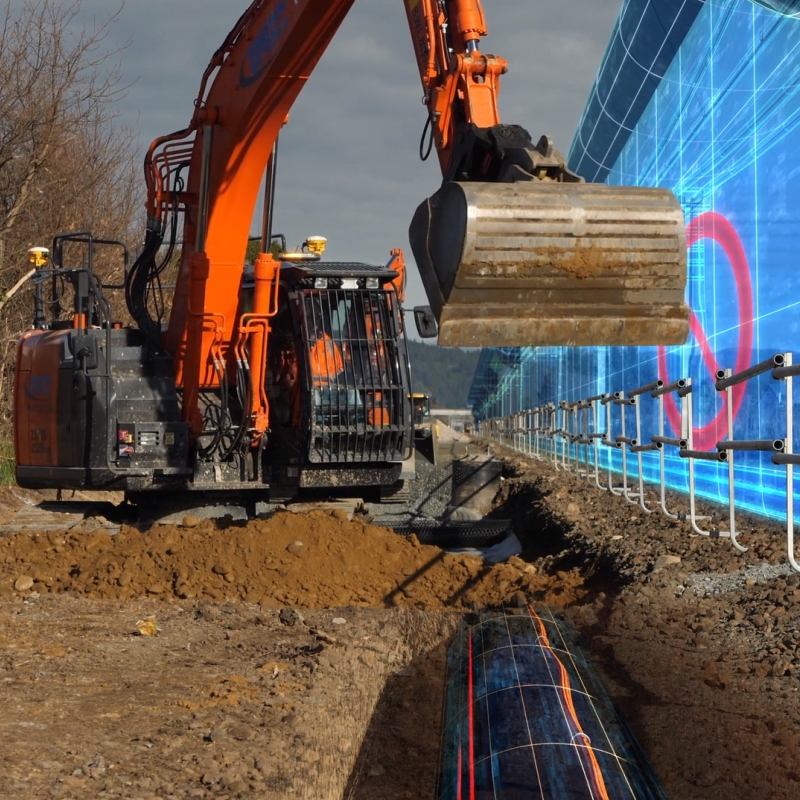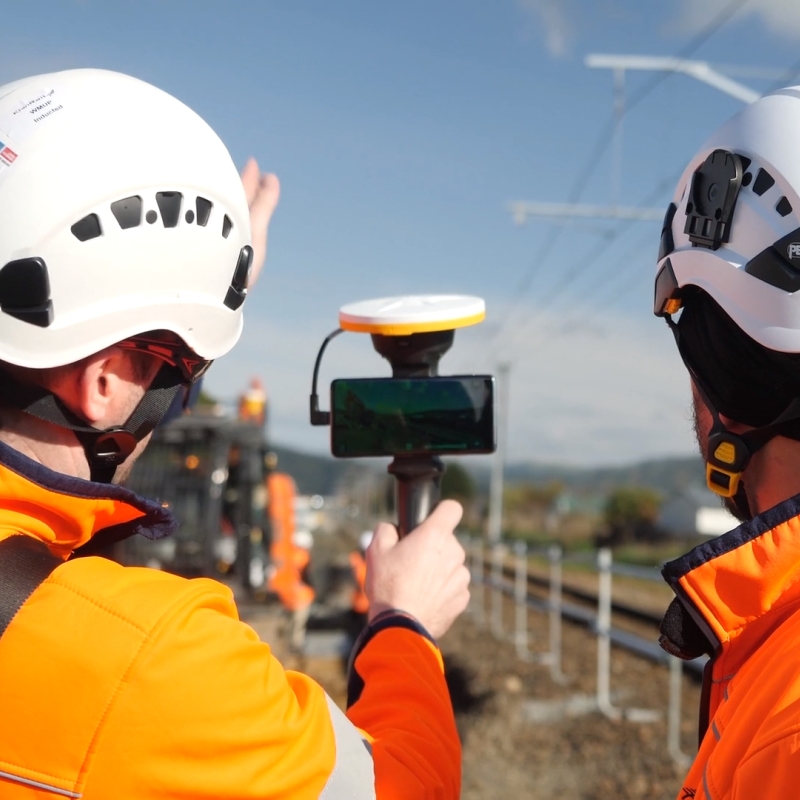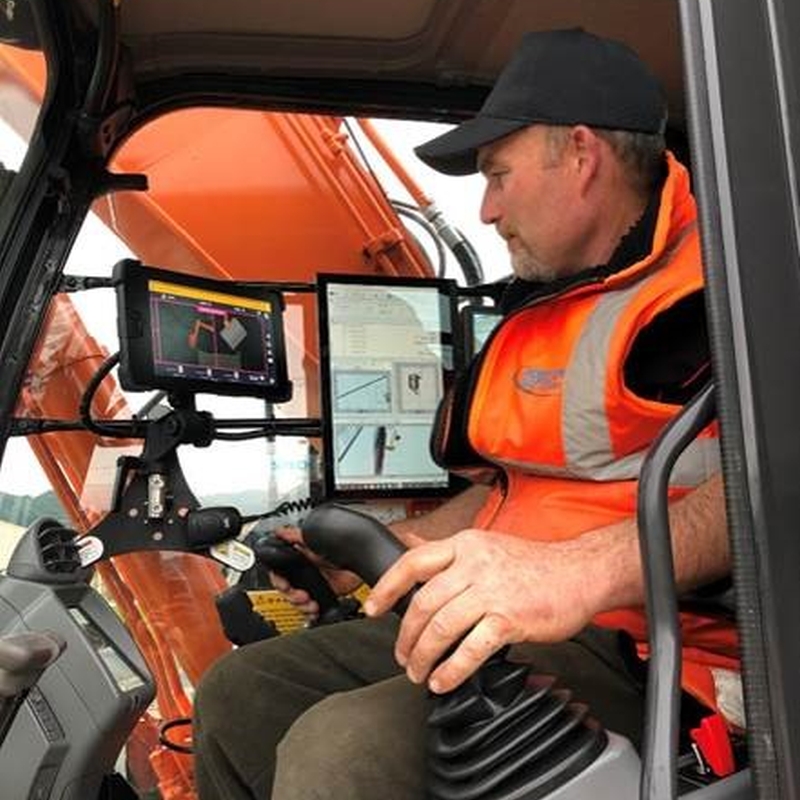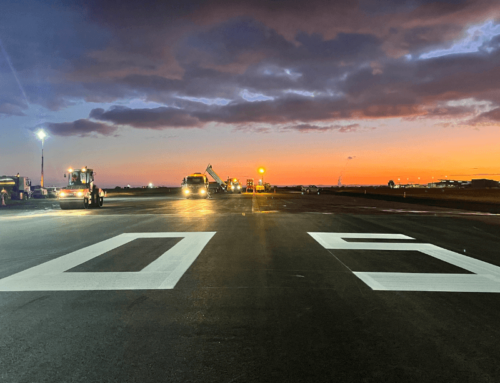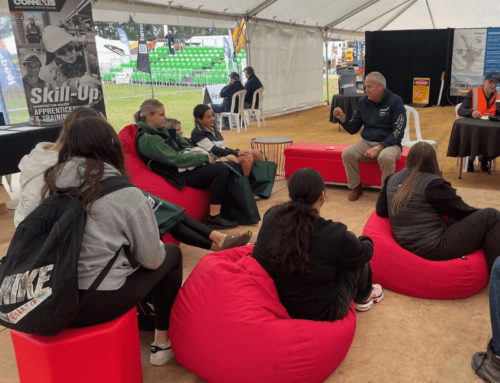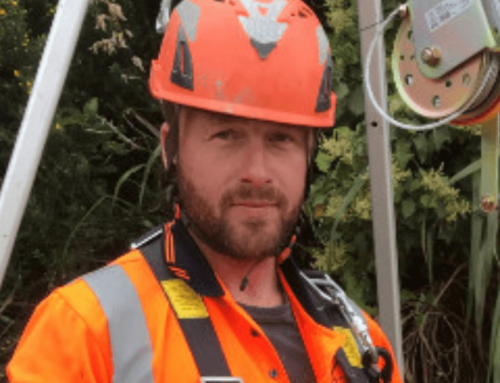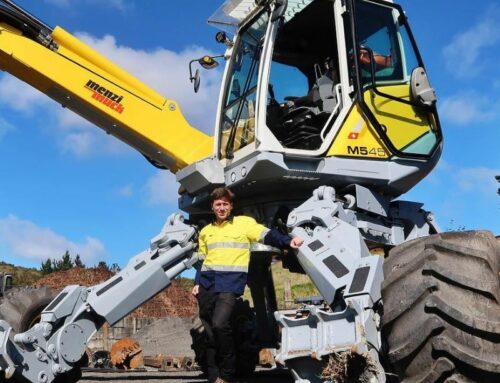Digital shields sound like something straight out of Star Wars, but for a group of excavator operators working on the railway line north of Wellington, having them on site is a daily reality.
The project to double-track the line between Trentham and Upper Hutt is the first of its kind on a railway corridor to harness an invisible, digital ‘shield’ to protect overhead power lines and other sensitive areas by locking the controls of excavators if any part of the machine makes contact with it.
The result is increased safety for excavator operators, as well as for the thousands of passengers who ride trains along the line on their daily commute.
Downer Operations Manager for Wellington Reuben Butcher says creating the digital shield involved mapping the entire length and surrounds of the 2.7 km Trentham to Upper Hutt line using a 3D camera and laser scanner mounted on a train. Areas of the 3D map that were out of bounds for excavators were then accurately geo-fenced using GPS, before being sent to and received by the excavators’ existing GPS machine control systems – with the help of a specialised software update.
“The idea came from marine technology and we just applied it above ground. The technology allows us to create a digital shield extending two metres either side of the rail corridor, as well as around overhead lines, posts, and any other features that need protecting.”
Reuben says the shield underwent a four-month trial, with spotters in place to ensure the technology was working as intended. It proved to be a success, allowing the remainder of the work to be done without the spotters that would normally be required and with no stopping and starting as trains went by.
One of the excavator operators who experienced the technology first-hand was Conrad Robertson, from Robertson Battock Civil. His company was intimately involved with development of the shield, working closely with KiwiRail and Downer, as well as CablePrice and Sitech Construction Systems – the New Zealand agent for navigation and infrastructure systems company Trimble.
“It was a real collaborative effort,” Conrad says. “We were already running Trimble Earthworks on our machines, and Sitech and CablePrice were brought on board to help us all create the digital shield for this project.”
In addition to safety benefits, the shield also gave KiwiRail – the manager of the railway corridor – the confidence to allow excavators to operate in closer proximity than normal to the railway lines, and with fewer interruptions when trains passed by, he says.
“The shield allowed us to operate right up against the limits of the work area, without overstepping the mark. If our bucket came up against the shield, it would hold the machine’s hydraulics in place and set off an alarm. We then had to flick an override switch and the system would allow us to withdraw the machine away from the shield.”
He says he and other excavator operators could see a colour-coded indicator on their control panel if they were getting close to the shield. They enjoyed the added protection the shield could provide against any operator error, momentary lapses of concentration, or medical events.
He says technology like the digital shield is exciting, particularly for younger operators considering a career in the industry.
“GPS control systems are pretty much the way forward for modern contracting companies. For younger guys, they are used to dealing with the latest technology and are well placed to pick up new systems quickly.”
Reuben says the technology used to create the shield used on the Trentham to Upper Hutt line would work with most modern excavators that had on-board machine control systems. The technology also has potential for people using machinery in other environments, whether they are working alongside the road network, or near water pipes or gas lines – so long as they can be accurately mapped.
People pursuing a career in civil construction can expect to see more technology innovations emerging in future, he says.
“The whole BIM and digital field is going to revolutionise the way we do our work – it’s an exciting development. Anything we can do to improve the quality and safety of our work by using technology has got to be a winner.”
KiwiRail’s Digital Shield System from Mediasol on Vimeo.
Under the hood: the digital shield project
– The digital shield project involved geofencing ‘out of bounds’ areas in a work environment and then sending that data to excavator control systems to prevent any part of the machine entering those.
– Similar digital shields could be used with most modern excavators that have on-board machine control systems. All it requires to operate is the installation of additional software and working GPS systems.
– The modelling used to create the digital shield was created using Downer’s high-tech Leica Pegasus: Two camera. The Pegasus uses GPS laser and scanning technology and takes as many at one million images per second in a 360-degree arc.
– The digital shield technology could be used in future for other purposes, whether to protect an underground gas line, or to allow less interruption to work on roading projects.
What is BIM?
Building Information Modelling (BIM) is a 3D model-based process that can help engineers and construction workers visualise and more efficiently plan, design, construct, and manage projects. It can be used for horizontal infrastructure, such as roads, railways and bridges, as well as for vertical infrastructure, such as buildings.
The work to double track the Trentham to Upper Hutt line is part of the Hutt Valley Line upgrade and is KiwiRail’s first full BIM project.
KiwiRail Programme Director – Digital Engineering Andy Lyon says the use of BIM on the project has led to a number of other changes to the way they work, in addition to the machine avoidance innovation. These have included the ability to visualise progress in 3D on a regular basis, thanks to monthly as-builts provided by Downer, along with the creation of virtual reality experience for local school children to increase understanding of safety around the level crossings on the railway line.

